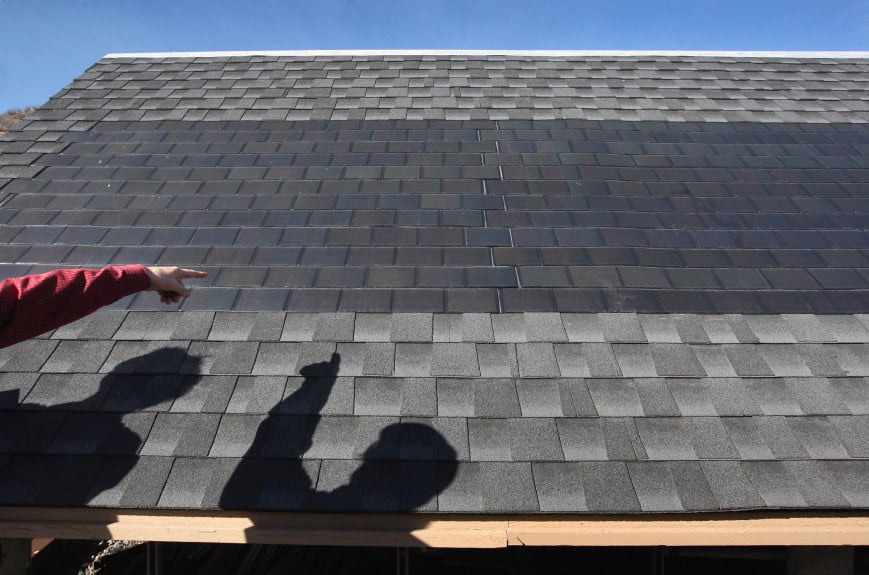
Elon Musk recently declared 2019 as the “year of the solar roof.”
The Tesla Inc. chief executive officer may be right — but not in the way he’s expecting. While the automaker tries to ramp up production of its textured glass, solar cell-embedded rooftop tiles, another group of formidable rivals is emerging: roofers.
One of the largest roofing companies in the world has begun offering its own version of a solar roof — essentially panels laid right up against the top of a house and surrounded by shingles. Standard Industries Inc. has received 200 orders for its product so far and expects to ship 2,000 this year, said Martin DeBono, president of the company’s GAF Energy.
It’s direct competition for Tesla, which has until now been the only major game in town when it comes to solar roofs. Industry stalwarts Sunrun Inc. and Vivint Solar Inc. affix panels atop roofs instead. A move by the construction industry into the solar-roof space challenges a business that Tesla has struggled to get off the ground since a high-profile launch in 2016 — and threatens economics across the rooftop industry as solar customers come cheaper for builders already contracted to install roofs.
The way GAF’s DeBono sees the solar opportunity: “Rather than be disrupted, let’s be the disrupter.”
Sunrun and Tesla declined to comment. Vivint didn’t respond to a request for comment.
GAF isn’t the only roofer expanding in the solar space either. PetersenDean Roofing & Solar started offering panels five years ago, did 9,800 installations in 2018 and is on pace to double that this year, said Steve Huber, the company’s vice president of consumer sales. Building product supplier Saint-Gobain unit CertainTeed began a solar division in 2010.
Their products aren’t all exactly the same. For example, Tesla’s solar rooftop is a customize-able, made-to-order product. GAF makes a one-size-fits-all option that’s ready to install right out of the box. Others affix panels to rooftops with racks and brackets.
Builders are expanding into solar just as the industry is preparing for installations to take off. California is requiring panels on new homes starting next year. That could boost annual installed capacity in the state to almost 1.6 gigawatts in 2020 from about 950 megawatts last year, according to BloombergNEF. Sunrun and Vivint are already lining up partnerships with home-builders in preparation.
“There is potential for solar to be offered by other trade services, including roofers, electricians and home-maintenance professionals,” said Hugh Bromley, a New York-based analyst at BloombergNEF. “Solar in its own right doesn’t need to be its own industry.”
For its part, Tesla acknowledged in late January that it was continuing to install solar roofs “at a slow pace” as it tries to improve its manufacturing capabilities. On Thursday, Musk said the company is turning its attention to the product now that production of its Model 3 sedan is “going pretty well.”
The solar roof isn’t “a needle-mover for Tesla’s shares,” Jeff Osborne, an analyst at Cowen & Co., said in an interview. “Right now, it’s on the white board of numerous Tesla products that have been proposed or revealed that don’t exist in mass volume,” he said.
As for GAF Energy, the company expects to ship about 10 megawatts of solar systems this year in nine U.S. states including California and New York. For comparison, a nuclear reactor generates upwards of 1,000 megawatts.
“We’re a growing startup in a hot space and we’re starting from zero,” DeBono said. “The goal is to make roofers solar people.”
